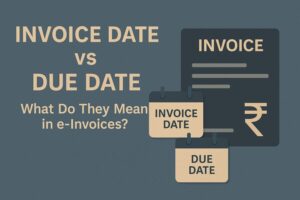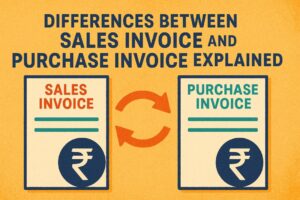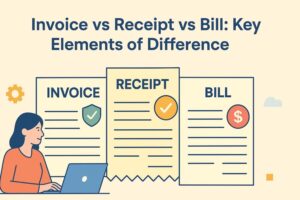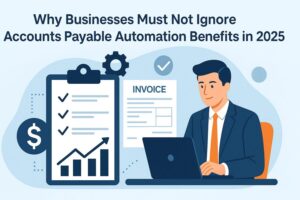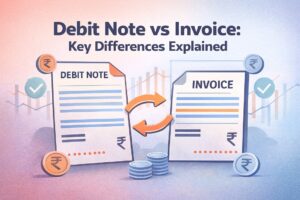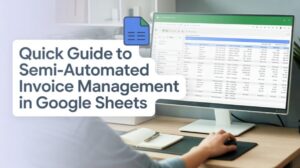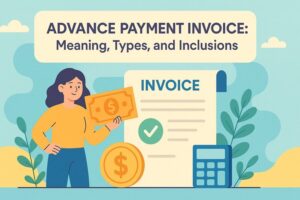E-Invoice for B2C Transactions: Meaning, Significance, Applicability and Implementation
- 14 Nov 25
- 8 mins
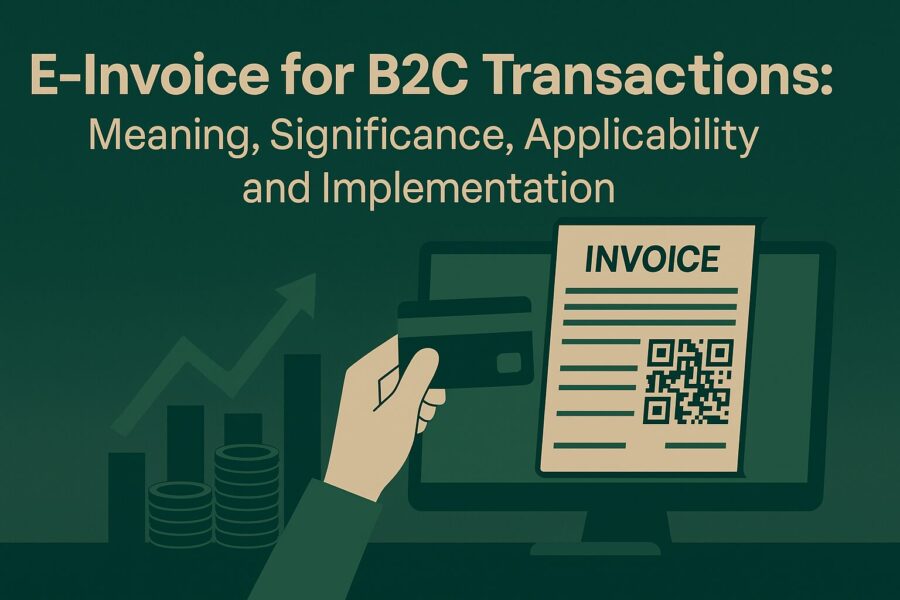
E-Invoice for B2C Transactions: Meaning, Significance, Applicability and Implementation
Key Takeaways
- The proposed e invoice for B2C transactions aims to digitise consumer invoicing to curb tax evasion and boost compliance.
- Businesses will upload B2C invoices to IRPs for authentication, generating a unique IRN and QR code under the e invoice for B2C transactions system.
- A controlled pilot will initially target large organised retailers and tech-enabled sectors before expanding e invoice for B2C transactions to smaller businesses.
- Implementation of e invoice for B2C transactions requires POS/ERP integration, staff training, and upgraded IT infrastructure.
- The e invoice for B2C transactions framework enhances transparency, ensures real-time reporting, and standardises invoicing across industries.
Until recently, paper-based manual accounting and invoicing created significant challenges for India’s growing MSMEs. However, the digital shift is well underway, with over 700 crore e-invoices generated by nearly 11.35 lakh suppliers between October 2020 and October 2024.
While e-invoicing mandatory for B2B transactions currently applies to businesses with annual turnover above ₹5 crore, the GST Council, during its 54th meeting on September 9, 2024, proposed a pilot e-invoice for B2C transactions. This initiative aims to curb tax evasion and improve compliance. Here's what you need to know about B2C e-invoicing.
What is B2C e-Invoicing?
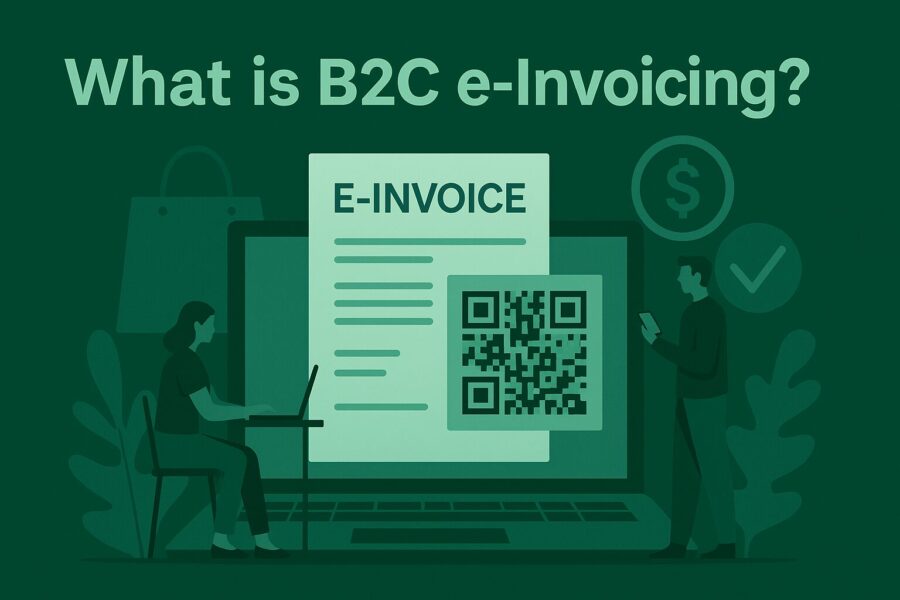
The B2C e-invoicing is a proposed system under the Indian Goods and Services Tax (GST) scheme, where direct sellers must provide electronic invoices. Until now, e-invoicing is compulsory for use in Business-to-Business (B2B) transactions of those companies where annual returns are more than ₹5 crores.
In case of an e-invoice for B2C transactions, the businesses would post their B2C GST invoices to an Invoice Registration Portal (IRP), authorised by the GST Network. Then the IRP would verify and authenticate these invoices. After a successful authentication process, a unique Invoice Reference Number (IRN) and a QR code with authentication details would be generated per e-invoice. The use of QR codes embedded in e-invoices facilitates real-time verification and enhances transparency.
Although B2B e-invoicing has already been effected, the use of B2C e-invoicing in India still awaits consideration by the GST Council. Its implementation would be a considerable step forward toward improving the tax system in India, which aims to increase its transparency and simplify the tax declaration process for corporations that deal with consumers.
Why Do B2C Transactions Require e-Invoicing?
At the end of the previous calendar year, GST collections rose by 10% reaching approximately ₹1.64 lakh crores. The tax collecting authorities believe that this growth can further accelerate if B2C transaction e-invoices are mandated, as it will help in:
- Revenue Assurance and Minimising Tax Evasion
The growth of electronic invoicing to cover B2C transactions is a strategic move to strengthen tax compliance. The program is meant to seal the loopholes that are currently there and thus collect every rupee payable.
As an example, consider a boutique shop that has been using paper invoices to issue to their customers for their luxurious bags, which may tempt them to show undeclared sales. Since digitised invoices have commenced, each transaction is automatically maintained and updated online in the GST Network, which ensures accurate compliance with taxes and decreases tax loss through evasion to a great extent.
- Streamlining the Consumer Journey
E-invoicing within GST will have significant benefits to consumers through the easing of refund procedures and reducing the costs of response by making responses easy. Such an integration creates an open accountability system, which guarantees obstacle-free tax dealings.
- Using Data as Business Intelligence
Automation of B2C transactions equips businesses with the ability to perform strong data analysis. This enables them to monitor the performance of sales effectively, identify the arising consumer trends and monitor the effect of the government initiatives by deploying top-notch ERP systems.
To give an example, a large chain of food outlets using B2C e-invoicing can get its sales information with utmost efficiency. Understanding the pattern of purchased products will allow them to differentiate between popular and least in-demand products so that they are in a position to make discounts or offers on the latter. This enhances the participation of the customers and also leads to improved sales.
Who is Eligible for B2C e-Invoicing?
Initially, the GST Council aims to introduce e-invoices for B2C transactions through a controlled pilot in selected states and sectors. Though the official list is pending, the rollout will likely focus on:
- Organised retail businesses with an annual turnover between ₹500 crore and ₹1,000 crore
- Tech-enabled sectors such as e-commerce, food delivery, quick commerce, online gaming, and OIDAR (Online Information and Database Access or Retrieval services)
Once the pilot proves successful, the scope is expected to expand gradually to include smaller businesses.
How to Deploy e-Invoicing for B2C Transactions?
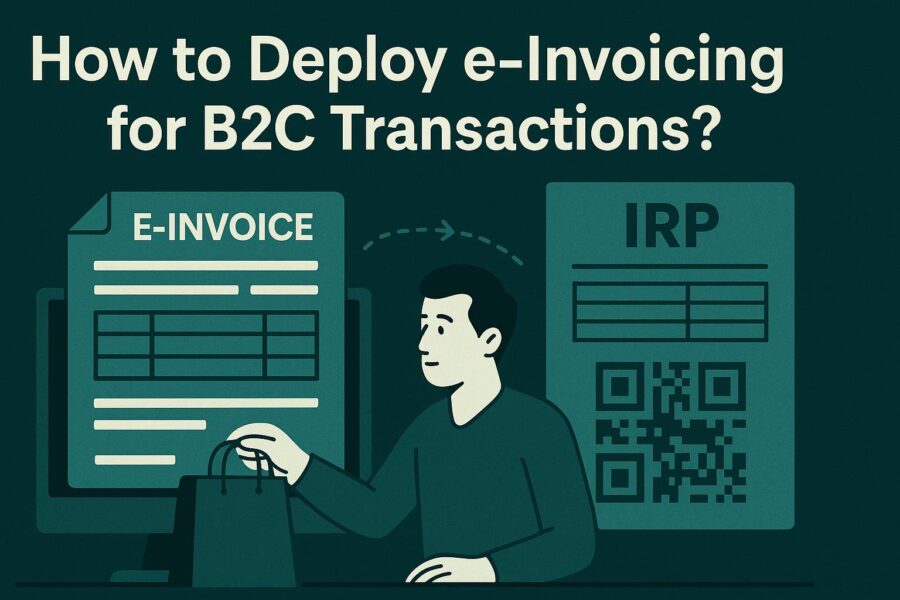
To implement B2C e-invoicing, businesses must integrate their billing or Point of Sale (POS) systems with a government-authorised IRP.
The process includes:
- Invoice Generation: Each invoice raised at a billing counter or online portal is converted into a prescribed JSON format.
- Submission to IRP: The JSON file is uploaded to the IRP via API integration.
- IRN & QR Code Generation: The IRP validates the invoice and generates a unique IRN and QR code.
- Invoice Delivery: The validated invoice is returned to the seller, who must share it with the customer within 48 hours, either printed or electronically.
In early 2024, India initiated this pilot with select large enterprises. According to market forecasts, the Indian e-invoicing segment is poised to grow at a CAGR of 21.3% between 2025 and 2033, reaching a market size of USD 2.44 billion by 2033.
💡If you want to streamline your payment and make GST payments via credit, debit card or UPI, consider using the PICE App. Explore the PICE App today and take your business to new heights.
Challenges Faced While Implementing B2C e-Invoicing Implementation
As the new B2C e-invoicing is set to be deployed in the near future, insufficient training or preparedness by all the applicable organisations will cause multiple challenges. Some of the affected teams are listed here:
- IT Department
If not done before, now the companies have to invest in superior IT infrastructure to ensure the continuous issuance of B2C invoices. This will ensure a 100% system uptime and help manage complicated plug-ins across multiple PoS and ERPs.
- Sales Team
Supporting data validations that make up an e-invoice for B2C transactions slows down business operations. If not tackled properly, it will cause work delays during peak hours, potential data entry errors and consequently customer dissatisfaction.
- Sales Management
Handling the training sessions of sales teams and ensuring that all the transactions are noted digitally and addressed appropriately to the government will require significant responsibility.
- Tax/ Finance Department
It can be quite a challenge, but it is absolutely necessary to gather and verify all your sales data from various systems to ensure your GSTR-1 tax report is accurate. With the addition of real-time B2C e-invoicing, this task has become a bit more complicated.
Advantages of B2C e-Invoicing
The Indian Government is expected to lower the B2C e-invoicing threshold and include smaller businesses registering a turnover of ₹1 crore to ₹1.5 crores in the system. The anticipated benefits are primarily as follows:
- E-invoice for B2C transactions will encourage standardisation across sectors, making sure that all the invoices are consistent.
- Electronic invoicing linked to UPI ID will minimise the instances of invoice manipulation as all the transactions need to be validated through the GSTN.
- Finally, these e-invoices will ensure that B2C transactions are precisely recorded in real-time. It will help avoid underreporting of transactions in GSTR-1.
Conclusion
The introduction of e invoices for B2C transactions marks a transformative step for Indian businesses, offering enhanced compliance, operational efficiency, and transparency. By digitising invoices, companies will look to minimise manual errors, reduce tax errors, and streamline consumer experiences.
As the GST framework evolves, businesses must prepare for compliance by upgrading infrastructure, training teams, and integrating seamlessly with IRPs. Ultimately, B2C e-invoicing aims to make the Indian tax system more robust, inclusive, and efficient, ushering in a new era of digital accountability.
 By
By 





